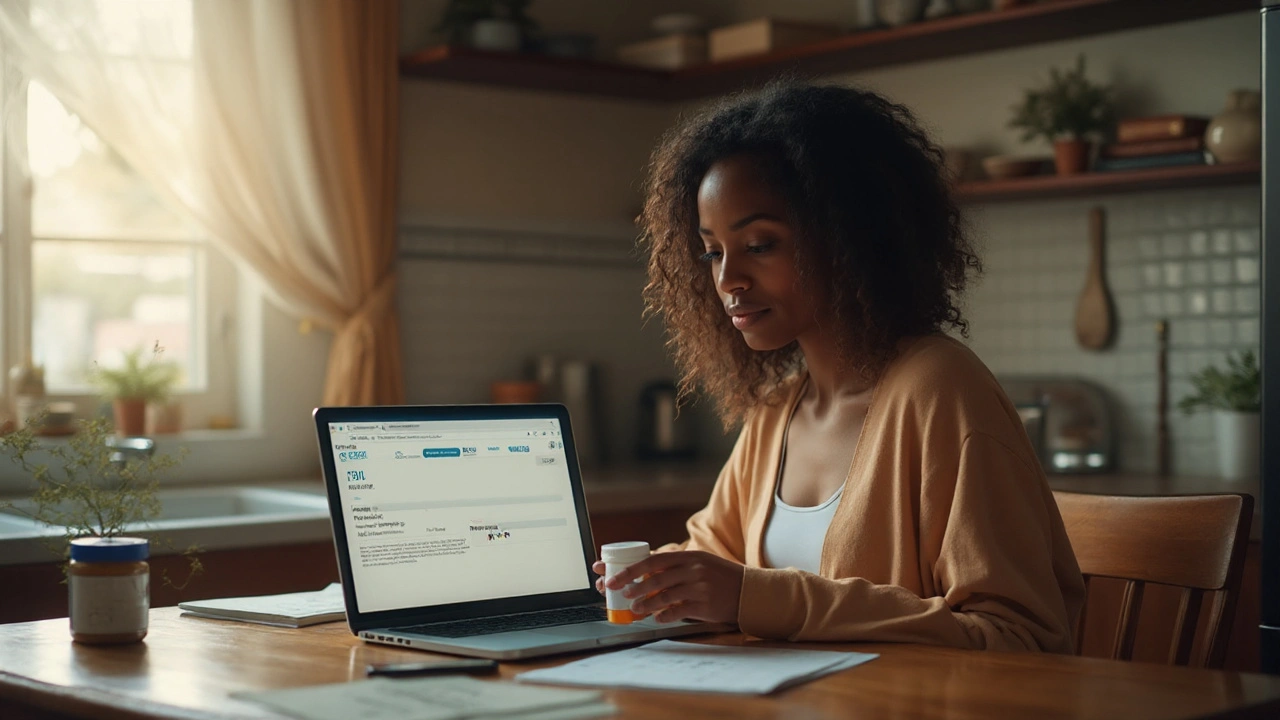Online Pharmacy Verification: Your Quick Guide to Safe Buying
Scrolling through endless pharmacy sites can feel like a maze. One wrong click and you could end up with counterfeit pills or a busted order. The good news? You don’t need a pharmacy degree to tell a legit site from a scam. Below are the exact steps you can take right now to make sure the online pharmacy you’re eyeing is trustworthy.
Check the License & Contact Details
The first thing I do is look for a clear license number and a physical address. Reputable pharmacies display their licensing authority—whether it’s the UK Medicines and Healthcare products Regulatory Agency (MHRA), Canada’s Health Canada, or the US FDA‑approved pharmacy board. If the site hides that info behind tiny footnotes, hit the back button.
Next, test the contact details. A real pharmacy will have a working phone number and an email address that uses the same domain (not @gmail.com). Call the number; a live person should answer within a few rings and be able to confirm the license number you saw online. If they push you to chat with a bot or give vague answers, treat it as a red flag.
Don’t forget the “About Us” page. Look for details about who runs the business, how long they’ve been in operation, and any professional affiliations. A short paragraph that simply says “We sell meds worldwide” isn’t enough.
Spot Red Flags and Test Pills
Even with a license, some sites slip counterfeit pills into orders. The post "How to Spot Fake Pills Online" outlines three quick checks you can do at home: compare the imprint on the tablet with official images from the FDA’s Orange Book, feel for unusual texture (real pills are usually smooth), and check the packaging for misspellings or low‑resolution logos.
If a deal looks too good to be true—like 70% off brand‑name Lyrica or Imodium—you should pause. Massive discounts often mean the product is sourced from unverified manufacturers. Use price comparison tools, but also ask yourself: would a licensed pharmacy sell at that margin?
Read user reviews on independent forums instead of only the site’s own testimonials. Real patients will mention delivery times, whether the pills matched their prescriptions, and if customer service helped with returns.
Finally, verify the payment gateway. Secure sites use https:// and display trusted icons like Visa, Mastercard, or PayPal. Avoid sites that ask for direct bank transfers or cryptocurrency unless you’ve done deep research.
By following these steps—checking licenses, testing contact info, spotting pricing red flags, and doing a quick pill inspection—you can shop online with confidence. Remember, your health isn’t worth the gamble of a shady pharmacy.
Buy Cheap Generic Amoxicillin Online Safely: Prices, Rules, and Better Options
Want cheap amoxicillin online? Here’s how to get it legally and safely, what real prices look like, red flags to avoid, and better options if you don’t have a prescription.
learn more